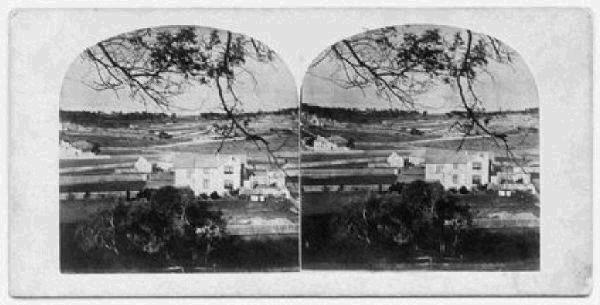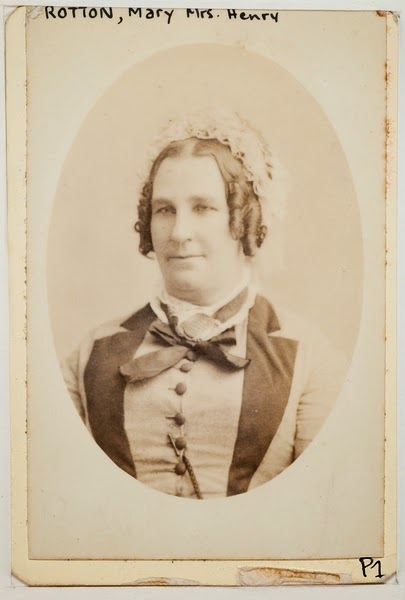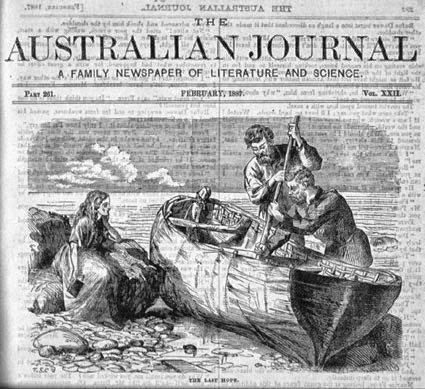
Jurors' entrance, PCHS Campbell St Hobart
Photo copyright © KLW NFC 2011
Photographer Thomas J. Nevin was exposed to the most pitiful of criminals if not to their actual crimes when he captured their portraits for police records in Tasmania from the 1870s to the 1880s. Sexual crimes against children were prosecuted without much consistency as to the punishment or length of sentence, despite clear legislation guidelines..
The Legislation
ANNO VICESIMO-SEPTIMO 1863.
VICTORIAE REGINIAE,
No. 5.
AN ACT to consolidate and amend the Legislative
Enactments relating to Offences against the
Person. [31 July, 1863.J
WHEREAS it is expedient to consolidate and amend the Legislative PREAMBLE.
Enactments relating to Offences against the Person: Be it enacted .
by His Excellency the Governor of Tasmania, by and with the advice
and consent of the Legislative Council and House of Assembly, in Par·
liament assembled, as follows :-
Rape, Abduction, and Defilement of Women.
45 Whosoever shall be convicted of the crime of Rape shall be
guilty of Felony, and being convicted thereof shall suffer Death as a
Felon.
46 Whosoever shall, by false pretences, false representations, or
other fraudulent means, procure any woman or girl under the age of
Twenty-one years to have illicit carnal connexion with any man shall
be guilty of a Misdemeanor, and being convicted thereof shall be liable
to be imprisoned for Ten years.
47 Whosoever shall unlawfully and carnally know and abuse any
girl under the age of Ten years shall be guilty of Felony, and being
convicted thereof shall suffer Death as a Felon.
48 Whosoever shall unlawfully and carnally know and abuse any
girl being above the age of Ten years and under the age of Twelve years
shall be guilty of a Misdemeanor, and being convicted thereof shall be
liable to be imprisoned for Seven years.
49 Whosoever shall be convicted of any assault with intent to
commit Rape, or of carnally knowing and abusing any girl being above the
age of Ten years and under the age of Twelve years, or of any attempt
to have carnal knowledge of a girl under Twelve years of age, or of any
attempt to commit Rape, shall be liable to be imprisoned for Ten
years.
50 Whosoever shall be convicted of any indecent assault upon any
female shall be liable to be imprisoned for Seven years.
READ the FULL ACT here {pdf}
An Act To Consolidate And Amend The Legislative Enactments Relating To Offences Against The Person (27 Vic, No 5) Austlii Database
William Clemo aka "Clocky"
This 48 yr old ex convict, William Clemo was sentenced to 7 years at the Hobart Supreme Court in the July sittings of 1868. He was discharged as William Cleme (typo) in the week ending 10th February, 1875, when Nevin photographed him in prison. Notice of the crime was published in the Hobart Mercury of 9 July, 1868, under the legally correct but socially abhorrent title - "MISDEMEANOUR",
TRANSCRIPT
MISDEMEANOURSource: LAW INTELLIGENCE. (1868, July 9). The Mercury (Hobart, Tas. : 1860 - 1954), p. 3. Retrieved April 15, 2014, from http://nla.gov.au/nla.news-article8853260
William Clemo, a middle-aged man, was placed at the bar, charged with committing an assault on a little girl named Emily Mary Easton, she being at the time above ten and under twelve years of age.
His Honor having summed up the jury retired, and after a short deliberation returned a verdict of guilty.
His Honor then sentenced the man to seven years' imprisonment.

POLICE RECORDS
Convictions in the Supreme Court, Hobart. These records are from the weekly police gazettes, Tasmania Reports of Crime, Information for Police, 1865-1885, James Barnard, Gov't Printer.
William Clemo, transported to Tasmania on the ship Equestrian 3, was sentenced to 7 yrs for "carnally assaulting a child under 12 years".
William Clemo was discharged and photographed by Nevin in the week of 10 February 1875 at the Hobart Gaol. This photograph was prepared from a negative, framed in a carte-de-visite mount, and pasted to Clemo's criminal record sheet. However, police records for the decade 1875-1885 show no further offences committed by Clemo, although that may simply mean he was not caught. The number "103" on the recto is an archivist's number made during copying of the original held at the QVMAG in Launceston for inclusion in the Archives Office of Tasmania's collection housed in Hobart.

Prisoner William Clemo, photographed by T. Nevin, 10 February, 1875 at the Hobart Gaol.
Source of image: QVMAG Ref:PH_PH30-3s_30-3229c
TRANSPORTATION RECORDS (TAHO)
Clemo, William
Convict No: 12923
Extra Identifier:
SEE Surname:
SEE Given Names:
Voyage Ship: Equestrian (3)
Voyage No: 357
Arrival Date: 16 Dec 1852
Departure Date: 01 Sep 1852
Departure Port: Plymouth
Conduct Record:CON33/1/111, CON94/1/1 p43
Muster Roll:
Appropriation List:
Other Records:
Indent:CON14/1/46
Description List:CON18/1/58
William Clemo was killed by a falling tree at Gladstone in 1882. An inquest was held on 9th February, and reported in the police gazette on 17 February 1882. A clockmaker by trade, hence the moniker "Clocky", Clemo was sentenced to 10yrs in 1849 and transported in 1852 for stealing a silver snuff box etc.
TRANSCRIPT
INQUESTS
An Inquest was held at Gladstone, on the 9th ultimo, upon the body of William Climo [sic], alias Clocky, 58 years of age, ship to Colony unknown. Verdict: = "Accidently killed by part of a tree falling upon him."
Capital Punishment
These two men, Henry Page (left) and Charles Downes (right) were convicted of rape of a child in separate crimes, and sentenced initially to death. When their sentences were reprieved in 1875, public outrage ensued regarding inconsistencies in sentences.


Left: Henry Page, per Phoenix 2,
Inscription: title and "297"--In ink on reverse.
Photographed by T. Nevin, 3 December 1873, Hobart Supreme Court
Capital Offence: Henry Page sentenced to death (reprieved-see letter to Editor below)
Mercury, 3 December 1873
TRANSCRIPT
LAW INTELLIGENCE.The jury's verdict and the prisoner's response:
SUPREME COURT.
CRIMINAL SESSIONS.
The Criminal Sittings of Oyer and Terminer were commenced yesterday in Hobart Town.
FIRST COURT. Before Mr. Justice Dobson.
A capital offence.
Henry Page, a baldheaded old man, about 70 years of age, was charged with a capital offence on a little girl named Fannie Bransfield, under 10 years old, at East Bay Neck.
-The Attorney-General prosecuted ; and Mr. J. W. Graves defended the prisoner.
The little girl (who gave her evidence in a very straightforward manner) detailed the particulars of her seduction, which occurred while she was out in the bush with the prisoner sorting wool. She also spoke to frequent acts subsequently, but in reply to Mr. Graves, admitted that she had not said anything to her mother about the assault for two Sundays after she was taken home.
Dr. Blyth, of Sorell, gave evidence of his examination of the little girl, strongly supporting the theory of the prosecution.
The child's mother, Anne Bransfield, said the girl made complaints to her on the third day after she was brought home. She further stated that when, a short time before last Christmas, she visited the ohild, the prisoner interfered, and prevented the child from seeing her on her way home.
Mr. Graves, for the defence, called a witness, who had known the prisoner for 20 years. He said he had never heard anything against his reputation during the whole of that period, until his arrest on the present charge.
His Honor carefully summed op the evidence, and the jury, at a few minutes past one, retired to consult their verdict.
THE RAPE CASE -SENTENCE OF DEATH RECORDED.Source: LAW INTELLIGENCE. (1873, December 3). The Mercury (Hobart, Tas. : 1860 - 1954), p. 2. Retrieved April 19, 2014, from http://nla.gov.au/nla.news-article8914823
The jury empanelled to try the charge against Henry Page, then brought in their verdict.
The Clerk of Arraigns asked if they were all agreed upon their verdict ?
The Foreman : We are.
The Clerk of Arraigns : How say you, do you find the prisoner guilty or not guilty.
The Foreman : Guilty, with a strong recommendation to mercy.
His Honor : I will take care that your recommendation is forwarded to the proper quarter. But it would be as well, perhaps, that you should state the ground of your recommendation.
The Foreman : On the ground of age and previous good character.
The Clerk of Arraigns (To the Prisoner) : Have you anything to say why judgment of death should not be recorded against you according to law ?
The Prisoner (who appeared not to understand his terrible position) replied after a pause : Bless my soul ! I did nothing to deserve death, nor anything else. I am as innocent as anybody can be of what she says. Prisoner then spoke most disrespectfully of the prosecuting witness, and added, I deserve no punishment.
His Honor said the prisoner had been found guilty, the victim being a child living under prisoner's roof, and who ought to have received his protection.
The prisoner (interrupting) : No one ever protected her more than I have done in every shape and way ; and I can stand here before this Court and my God, and say my conscience is clear of what she says of me. I have kept myself as respectable as anyone in the island in my circumstances could do, for the last 30 years ; and I have done nothing to deserve death or any other punishment. God knows I have not.
His Honor said the jury had found him guilty on evidence which he was sure could not fail to satisfy rnost reasonable minds. Not only did the evidence prove the fact that he committed a gross outrage on this girl, but that moreover he had subjected her to habitual ill-treatment.
The Prisoner : It's false, Sir, every word of it.
His Honor said the jury had found him guilty, with a recommendation to mercy. A few years ago this offence would have had but one result, and though it still remained a capital offence, he felt in some degree justified, after the jury's recommendation,and bearing in mind the merciful clemency of the executive in the present day, not to pass upon him the extreme sentence. However it would be in the power of the Executive, if they think fit, to have the capital punishment carried out. The sentence of the Court was that the sentence of death be recorded against the prisoner, and it would be for the Executive to say what period of punishment he would have to undergo.
The prisoner was then removed.
Right: Charles Dawnes, per Rodney 2,
Inscription: "286"--On reverse.
Photographed by Nevin, Thomas J.
NLA Catalogue 2005 with correct attribution to Thomas J. Nevin.

The Mercury 15 February 1872
Charles Downes was found guilty on a charge of feloniously assaulting Dorothy Smith, aged 9 years, in Stacey's revolving circus in the Queen's Domain, and remanded for sentence.Public outrage at capital punishment, sparked by the execution of Job Smith whom Nevin had photographed under the alias of William Campbell (NLA and TMAG Collections), referred to the reprieve granted to Charles Downes, as well as Marsh and Henry Page, in letters to The Mercury, May 29th 1875. This letter expressed disbelief in the inconsistencies of the sentences:
Capital Punishment: Marsh, Page and Downes reprieved,
Job Smith executed.
The Mercury 29 May 1875
TRANSCRIPT
TO THE EDITOR OF THE MERCURYSource: CAPITAL PUNISHMENT. (1875, May 29). The Mercury (Hobart, Tas. : 1860 - 1954), p. 3. Retrieved April 16, 2014, from http://nla.gov.au/nla.news-article8937571
Sir,-Since the Executive have shut their ears to all appeals to spare the life of the condemned Job Smith, I cannot refrain from asking, upon what principles the death penalty has been, and is to be hereafter, inflicted, or commuted, in Tasmania. The man Marsh, who was tried on the same day as Smith, and found guilty of the same offence, has been reprieved-not for any extenuating circumstances in connection with his crime, but, apparently, because no great amount of violence was used by him, the fear of his victim having rendered it unnecessary. In December, 1873, Henry Page was tried and found guilty of rape upon a child under age, under circumstances the most horrible and revolting that ever came before a Tasmanian jury. This inhuman monster was sentenced to death, but was reprieved on account of his great age, and is now confined at Port Arthur. In February, 1872, Charles Downes was tried and found guilty of carnally knowing a child under ten years of age, under circumstances which amounted to nothing short of a violent rape. This man was also, after being sentenced to death, reprieved.
In the presence of these three reprievals, I look in vain for the principle upon which the Executive have decided to hang Job Smith. If in anyone, of the four cases now under notice, so far as they are to be compared with each other, there was any palliating circumstances, it was surely in the case of Smith. He had been removed by the strong arm of the law from all the opportunities left open to the other three of sinning at pleasure without rendering themselves liable to arrest for crime. It must also be confessed that had strict discipline been in force in regard to Smith, the offence for which he is about to suffer would not have been committed.
What then is the particularly dark feature in the case of Smith for which the Executive have determined that he shall die? Is it because he struck his victim on the arm with a piece of batten? Then it is not the rape for which they are punishing him. Or, are the Executive carrying out the extreme penalty of the law in the present instance because the Judge who tried the case thought fit to say, that if ever there was a case in which it was proper to do so, this was one? Then the Executive had better, for the future, resign their prerogative into the hands of the Chief Justice. But until they think fit to do so, it is to be demanded of them that they mete out to all persons who come under their jurisdiction an equal administration of the law; but how the reprieving of Downes, Page, and Marsh, and the hanging of Job Smith, can be proved to be that, I, for one, cannot see.
I am, yours truly,
EQUITY.
Charles Downes was granted a reprieve. He died in custody at the Hobart Gaol. The inquest into his death was published in The Mercury 13 August 1878.
And the rest ...
Thomas Nevin photographed a number of prisoners convicted of carnal knowledge of a child. This list is randomly generated from from the search term "carnally" in the police gazettes from 1866 to 1885. Insert the word "rape" and the results proliferate, so this list is far from complete:
1866 Convictions
William Smith alias Lee Death
1868 Convictions
Patrick Cavanagh 7yrs
1869 Warrants
Thomas Smith alias Bentley
Thomas Fowler or Fynn
1871 Convictions
George Brown Death
1872 Convictions
Philip Aylward 2 yrs
1873 Convictions
James Bryant 10 days and 2 yrs Training School
Robert Innes 2 yrs
Edwin Adams 2yrs
1878 Warrants
Warrant John Rheuben
Warrant William Wilson
1881 Convictions
James Kirle 9yrs
1884 Emanuel Vera Remanded
1885 Convictions
John Coote 3yrs

Philip Aylward, photographed by Nevin on 18th February, 1874.

















































































































































